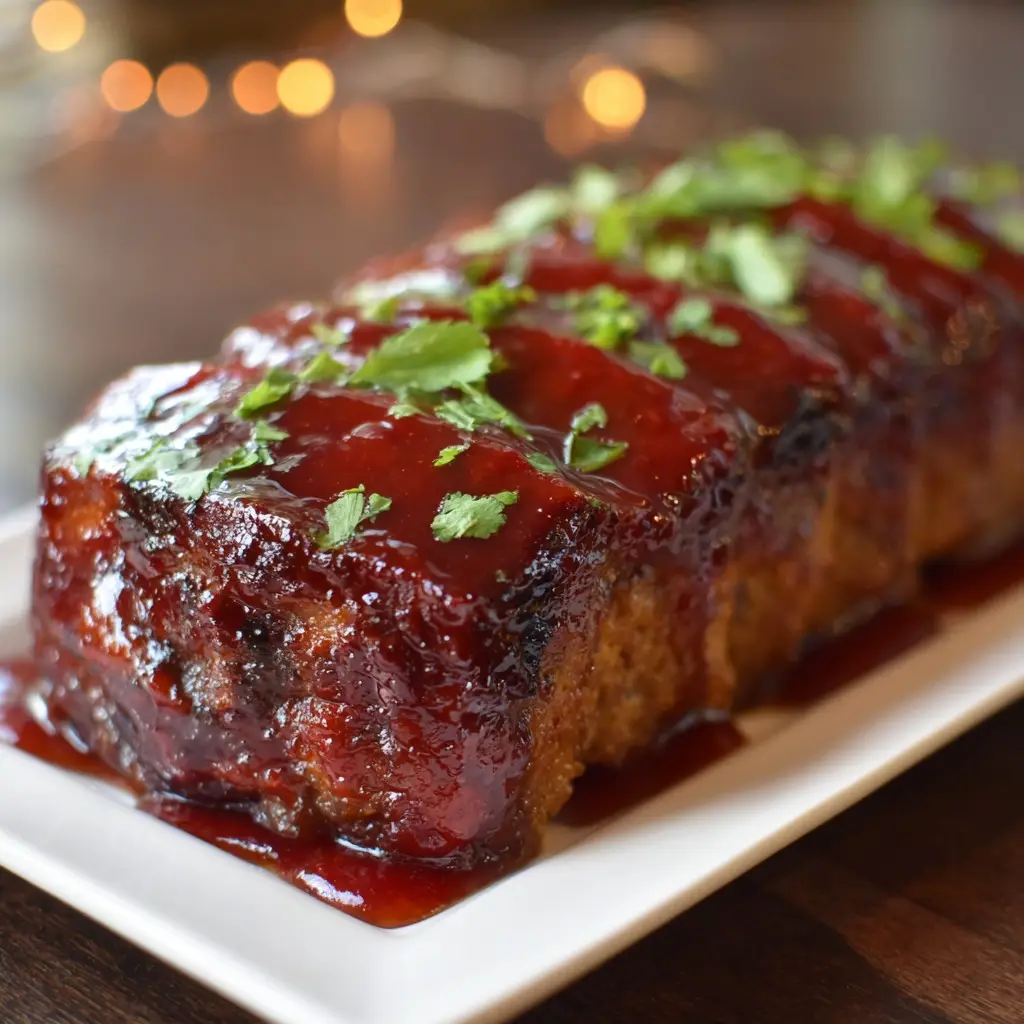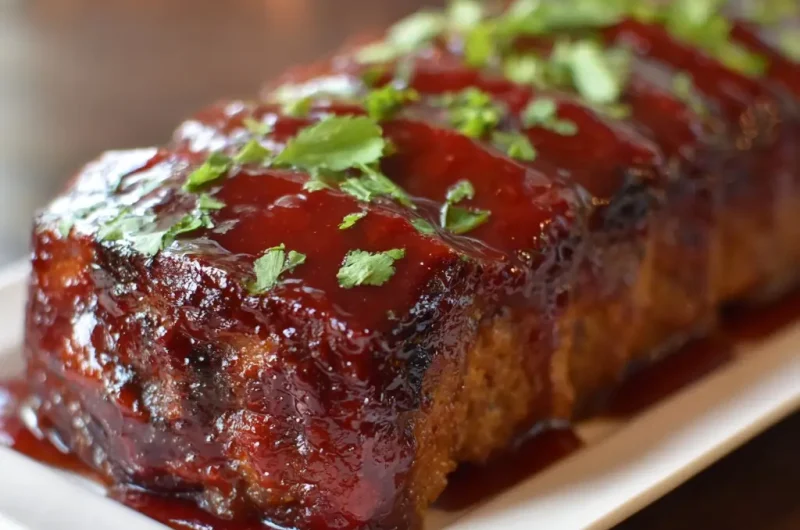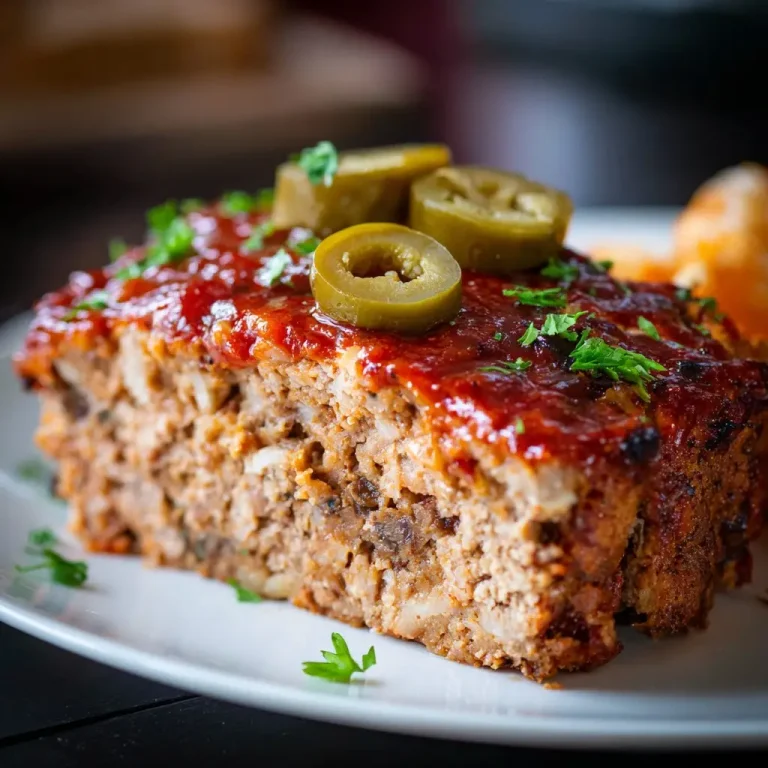Meatloaf Glaze Recipe: Easy, Sweet, and Tangy Topping for Perfect Meatloaf
Introduction
Meatloaf has been a beloved comfort food in many households for generations. While the base of meat, breadcrumbs, and seasoning is important, the glaze applied on top plays a crucial role in elevating the entire dish. The right glaze can add a sweet, tangy, or smoky flavor that perfectly complements the savory meat. It creates a beautiful caramelized crust that locks in moisture and adds a glossy finish that is as appealing to the eyes as it is to the palate. Crafting a great meatloaf glaze is an art that combines simple ingredients into a rich, flavorful topping. It enhances the texture and balances the flavors of the meatloaf, making every bite memorable.
The best meatloaf glazes are easy to prepare and customizable, allowing you to adjust sweetness, acidity, and spice according to your preferences. Whether you prefer a classic ketchup-based glaze or want to experiment with barbecue sauce or balsamic reductions, mastering the glaze brings your meatloaf to a new level. This guide dives deep into the essentials of meatloaf glaze, offering detailed instructions, tips for customization, and serving ideas that turn an everyday dish into a family favorite.

Ingredients Needed
Below is a simple table listing the common ingredients needed for a classic meatloaf glaze, including their approximate calorie counts per serving size:
| Ingredient | Quantity | Calories (Approx.) |
|---|---|---|
| Ketchup | ½ cup | 60 |
| Brown sugar | 2 tablespoons | 90 |
| Worcestershire sauce | 1 tablespoon | 15 |
| Dijon mustard | 1 teaspoon | 5 |
| Apple cider vinegar | 1 teaspoon | 3 |
| Garlic powder | ¼ teaspoon | 2 |
| Black pepper | ¼ teaspoon | 1 |
This simple combination creates a balanced glaze that offers sweetness, tanginess, and a hint of umami. Adjustments to these ingredients can bring new layers of flavor to the glaze.
Step-by-Step Cooking Instructions
Creating the perfect meatloaf glaze involves a few straightforward steps. Follow these carefully for best results:
- Combine Ingredients
In a small bowl, mix ketchup, brown sugar, Worcestershire sauce, Dijon mustard, apple cider vinegar, garlic powder, and black pepper. Stir well until the sugar dissolves completely and the mixture is smooth. - Prepare Meatloaf
Before glazing, form your meatloaf mixture using ground meat, breadcrumbs, eggs, and seasonings of choice. Place it in a loaf pan or shape it on a baking sheet. - Apply Glaze Initially
Using a spoon or brush, spread about half of the glaze evenly over the top of the meatloaf. This initial layer will soak into the surface, infusing flavor. - Bake the Meatloaf
Place the meatloaf in a preheated oven at 350 degrees Fahrenheit. Bake uncovered for about 45 minutes to 1 hour, depending on size. - Add Final Glaze Layer
About 15 minutes before the meatloaf finishes cooking, remove it from the oven and apply the remaining glaze. This step allows the glaze to caramelize and form a glossy, flavorful crust. - Finish Baking
Return the meatloaf to the oven and bake for the final 15 minutes. Once done, let it rest for 10 minutes before slicing to retain juices.

Tips for Customizing the Recipe
Experimenting with meatloaf glaze ingredients can lead to exciting and delicious results. Here are some ideas to help personalize your glaze:
- Swap Ketchup for Barbecue Sauce: Using a smoky barbecue sauce instead of ketchup introduces a richer, deeper flavor. Try adding a dash of hot sauce for a spicy kick.
- Use Honey or Maple Syrup: Replace brown sugar with honey or maple syrup for a natural sweetness and a unique flavor profile.
- Add Fresh Herbs: Incorporate chopped fresh rosemary, thyme, or parsley into the glaze for an herbal twist that brightens the taste.
- Incorporate Mustard Varieties: Try spicy brown mustard or whole grain mustard in place of Dijon for different textures and tang.
- Make It Spicy: Add cayenne pepper, smoked paprika, or chili flakes to give the glaze a subtle or bold heat, depending on your preference.
- Try Fruit-Based Glazes: Blend apricot preserves or cranberry sauce with the base ingredients to introduce a fruity element that pairs beautifully with meat.
Personalizing the glaze keeps meatloaf exciting and lets you tailor the dish for any occasion or seasonal produce.
Nutritional Information
While meatloaf is generally considered a hearty, calorie-dense meal, the glaze itself contributes modestly to the overall nutritional profile. For the glaze recipe provided, here’s a rough estimate per serving (assuming the glaze serves 6):
- Calories: 29
- Carbohydrates: 7 grams (mainly from sugar in ketchup and brown sugar)
- Fat: 0 grams
- Protein: 0 grams
- Sodium: Approximately 150 mg
This glaze adds flavor without significantly increasing fat or protein content. For those monitoring sugar intake, consider reducing brown sugar or using low-sugar ketchup varieties.

Serving Suggestions
Meatloaf with its flavorful glaze pairs wonderfully with classic sides that complement its hearty taste:
- Mashed Potatoes: Creamy mashed potatoes balance the tangy sweetness of the glaze perfectly.
- Roasted Vegetables: Carrots, green beans, or Brussels sprouts roasted with olive oil and garlic add freshness and texture.
- Steamed Rice: Simple steamed rice absorbs the glaze’s juices, making every bite satisfying.
- Side Salad: A crisp green salad with a light vinaigrette helps cut through the richness of the meatloaf.
- Dinner Rolls: Soft rolls are perfect for sopping up extra glaze and meatloaf juices.
For a more modern twist, serve slices of glazed meatloaf atop a bed of sautéed kale or with creamy polenta. The glaze also works well as a dipping sauce for leftover meatloaf bites.
Meatloaf Glaze Recipe: Easy, Sweet, and Tangy Topping for Perfect Meatloaf
Course: Blog6
servings5
minutes15
minutes29 calories
kcalIngredients
½ cup ketchup
2 tablespoons brown sugar
1 tablespoon Worcestershire sauce
1 teaspoon Dijon mustard
1 teaspoon apple cider vinegar
¼ teaspoon garlic powder
¼ teaspoon black pepper
Directions
- In a small bowl, combine ketchup, brown sugar, Worcestershire sauce, Dijon mustard, apple cider vinegar, garlic powder, and black pepper. Stir well until smooth and sugar dissolves.
- Spread half of the glaze evenly over the top of your prepared meatloaf before baking.
- Bake the meatloaf at 350°F (175°C) for about 45 minutes to 1 hour.
- About 15 minutes before the meatloaf is done, remove it from the oven and brush the remaining glaze on top.
- Return the meatloaf to the oven and bake for the last 15 minutes to allow the glaze to caramelize.
- Let the meatloaf rest for 10 minutes before slicing and serving.
Recipe Video
Notes
- For a different flavor, try substituting ketchup with barbecue sauce or adding a pinch of cayenne pepper for a spicy kick. Store any leftover glaze in an airtight container in the refrigerator for up to one week.
Frequently Asked Questions
What can I use if I do not have ketchup?
Barbecue sauce, tomato paste mixed with a bit of vinegar and sugar, or even salsa can substitute ketchup in the glaze.
Can I make the glaze ahead of time?
Absolutely. Prepare the glaze and store it in an airtight container in the refrigerator for up to a week.
Is the glaze suitable for different types of meatloaf?
Yes, this glaze pairs well with beef, pork, turkey, or a combination of meats.
How do I avoid a soggy meatloaf with glaze?
Apply the glaze halfway through baking and then again near the end. This prevents sogginess and promotes caramelization.
Can I freeze meatloaf with glaze?
It is best to freeze meatloaf without the glaze and add fresh glaze before reheating for best texture.
Conclusion
A delicious meatloaf glaze can transform a simple meatloaf into a dish that looks irresistible and tastes even better. Its role in locking in moisture and adding layers of flavor cannot be overstated. The ingredients for the glaze are easy to find and quick to mix, making it a convenient addition to your cooking routine. Adjusting the glaze to suit your taste keeps this classic meal fresh and exciting.







